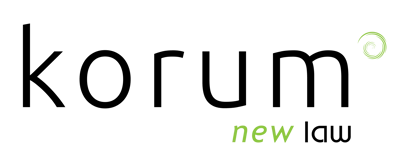The Future of Law is What We Design It to Be..
.png)
After surviving the buzz and excitement of Legal Geek 2018 the day before, Annalise Haigh and I gallantly traipsed back to East London to attend the first ever Legal Design Geek Conference. Legal Design was a far more intimate affair, with only about 200 attendees compared to the 2000+ that attended Legal Geek. (Click here to read Annalise’s recap)
Whereas Legal Geek is all about showcasing the latest LegalTech
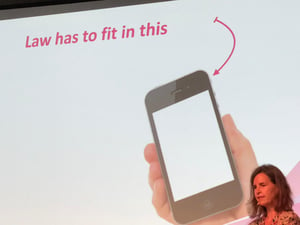 \innovations - some were real and tangible; some, perhaps, were just hype and hot air - Legal Design is about something altogether different. Addressing the challenge of how we rethink and reconceptualise the way we deliver legal principles, concepts and documents (yes, contracts of varying complexity included) to a new kind of legal customer. Millennials and later generations thriving in the gig economy demand and expect that legal solutions are designed with their generation’s perspective and interests in mind. The days of 27-page memos of 100+ page contracts and of T&Cs that run into ten plus pages are over. Well, at least for these new kinds of customers, it is!
\innovations - some were real and tangible; some, perhaps, were just hype and hot air - Legal Design is about something altogether different. Addressing the challenge of how we rethink and reconceptualise the way we deliver legal principles, concepts and documents (yes, contracts of varying complexity included) to a new kind of legal customer. Millennials and later generations thriving in the gig economy demand and expect that legal solutions are designed with their generation’s perspective and interests in mind. The days of 27-page memos of 100+ page contracts and of T&Cs that run into ten plus pages are over. Well, at least for these new kinds of customers, it is!
It all boils down to a user-centric design
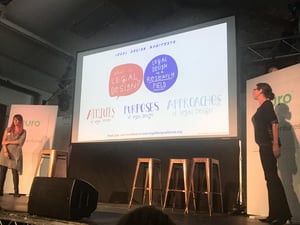 So, what do we mean by “legal design”? Legal design is, to put it simply, the adoption and application of design principles into the legal world, just as they have been to practically every other industry or sector - from interior design and architecture to mobile phones and other smart devices, to furniture and white goods you use every day in your home. Good design is about understanding the needs, hopes and desires of your customers and designing products and services with those very same needs and desires in mind. A great design is pleasurable to use - think of Apple, Google, Samsung, Netflix…the list goes on.
So, what do we mean by “legal design”? Legal design is, to put it simply, the adoption and application of design principles into the legal world, just as they have been to practically every other industry or sector - from interior design and architecture to mobile phones and other smart devices, to furniture and white goods you use every day in your home. Good design is about understanding the needs, hopes and desires of your customers and designing products and services with those very same needs and desires in mind. A great design is pleasurable to use - think of Apple, Google, Samsung, Netflix…the list goes on.
When designing a legal solution, start with understanding what is the problem or challenge that your client is experiencing. It’s only by truly understanding the root of the problem, will we be able to design a user-centric legal solution that addresses their real needs.
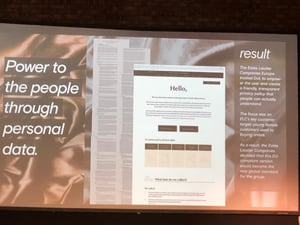 In designing a legal document, think about the user experience and customer journey - simplicity, clarity, brevity and enjoyability should always inform how you design. For example, a good way to bring clarity and simplicity is to cluster similar principles and ideas together. Another way is to use tables, boxes and other visual aids to help guide the user to the important elements in your document. In doing so, you are helping them to understand the key messages you’re trying to convey. DOT.Legal showcased how they helped Estee Lauder to redesign pages and pages of bland text for a privacy policy and transformed it into a single page that is visually attractive, clear and easy to read and understand for the consumer. The impossible is possible - if you step into the customer’s shoes. Other companies leading the way in this exciting space that attended or presented at the conference included Juro, DWF Ventures, Theory and Principle and Visual Contracts.
In designing a legal document, think about the user experience and customer journey - simplicity, clarity, brevity and enjoyability should always inform how you design. For example, a good way to bring clarity and simplicity is to cluster similar principles and ideas together. Another way is to use tables, boxes and other visual aids to help guide the user to the important elements in your document. In doing so, you are helping them to understand the key messages you’re trying to convey. DOT.Legal showcased how they helped Estee Lauder to redesign pages and pages of bland text for a privacy policy and transformed it into a single page that is visually attractive, clear and easy to read and understand for the consumer. The impossible is possible - if you step into the customer’s shoes. Other companies leading the way in this exciting space that attended or presented at the conference included Juro, DWF Ventures, Theory and Principle and Visual Contracts.
Empathy is key to great legal design
To be able to design in a truly user-centric manner, we must empathise with the user. Who is going to use the product? How are they going use it? For what purpose? When designing a legal product, we need to not only consider what the client wants, but also what the end user wants – that kind of empathy ensures that the end product will be successfully used. When designing, think about the typical personas of users? Different personas will have different needs and desires. Your design should be informed by a few of these typical personas.
Take it one step at a time
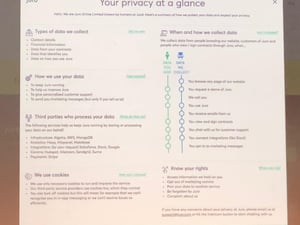 When rethinking how you design legal documents and concepts, start small and iterate over time as you go along. Legal design should work with all types of legal documents. Start with consumer-facing documents such as privacy policies, website and consumer facing T&Cs, etc, or simpler agreements, such as an influencer agreement or a sponsorship agreement. Don’t start with large or complex documents (e.g. shareholder’s agreement or employment agreement). And focus on those changes that have the potential to change the way a consumer comes into contact with the law.
When rethinking how you design legal documents and concepts, start small and iterate over time as you go along. Legal design should work with all types of legal documents. Start with consumer-facing documents such as privacy policies, website and consumer facing T&Cs, etc, or simpler agreements, such as an influencer agreement or a sponsorship agreement. Don’t start with large or complex documents (e.g. shareholder’s agreement or employment agreement). And focus on those changes that have the potential to change the way a consumer comes into contact with the law.
When a legal product can achieve all of the above, a trusting relationship can be built between lawyer and client; between the legal designer and the customer. So, legal geeks, start designing away. What do we have to lose?
Great job to Jimmy Vestbirk and the rest of the Legal Geek team for organising a great conference - truly thought-provoking and practical, and well worth turning up to attend a second day of geekdom. A game-changer, in my humble view!
Danh Nguyen
Oct 25, 2018
Related Posts.
By: Danh Nguyen & Rob Shakespeare
Lessons from Asia’s COVID-19 response & the road to recovery
The COVID-19 pandemic has shaken the world to its very foundations. It has impacted virtually every aspect of life and forced governments, businesses and individuals to make drastic changes to the..
By: Annalise Haigh
CLOC Institute Australia 2018 – Wrap Up and Key Takeaways
The inaugural Australia CLOC Institute, held in August in Sydney, was an epic kick off to the Australian CLOC journey. The one-and-a-half-day conference covered all things Legal Operations related,..
